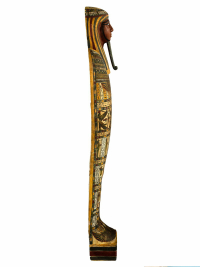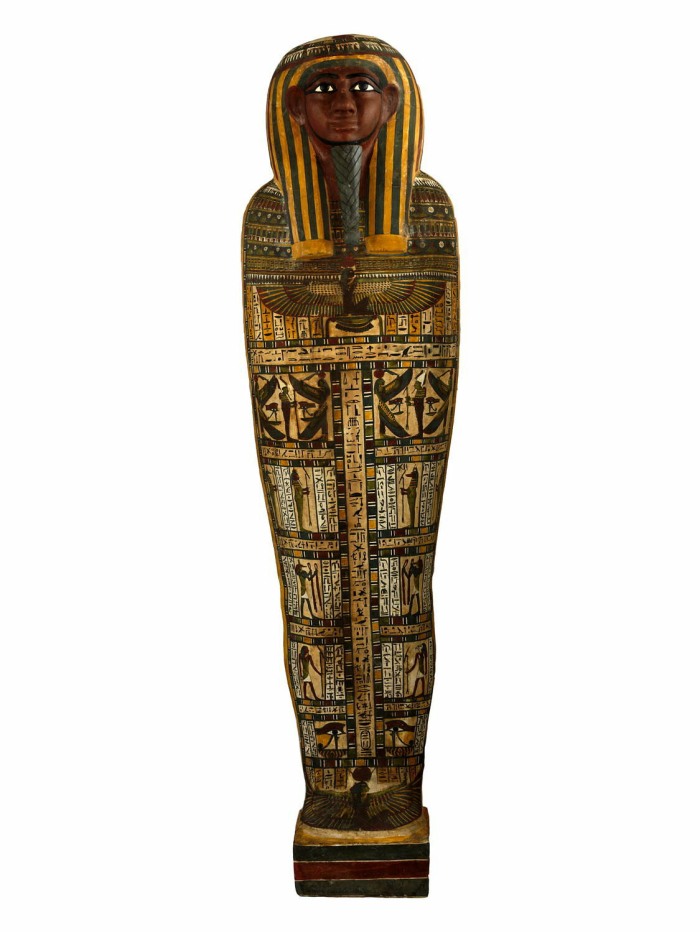



coffin lid; mummiform coffin
An item at Louvre
man (shroud, tripartite wig, forehead protector, coiled false beard, usekh necklace) Decoration: outside on the chest; winged goddess (kneeling, on, gold sign, outstretched wings, sun disk) 1st register; worship scene (2, symmetrical); Osiris (standing, shroud, atef crown, holding, was scepter, flanked by); winged goddess (2, symmetrical, standing, sun disk, outstretched wings, protecting); 2nd register; the four sons of Horus (standing, shroud, holding, was scepter); 3rd register; Anubis (2, symmetrical, dog-headed god, standing, presenting, strip of cloth); 4th register; right; Geb (standing, holding, was scepter); left; Horus (falcon-headed god, standing, holding, was scepter); 5th register; wedjat eye (2, symmetrical, on, neb sign) on the feet; Isis (winged goddess, kneeling, wings outstretched, disc-shaped horns) on the base; bands (3) (interior simply whitened)
Department of Egyptian Antiquities
An exhibit at Louvre
The collections of the Department of Egyptian Antiquities present the civilization that evolved on the banks of the Nile, from the end of Prehistory (around 4,000 BCE) to the Christian era (from the 4th century CE).




